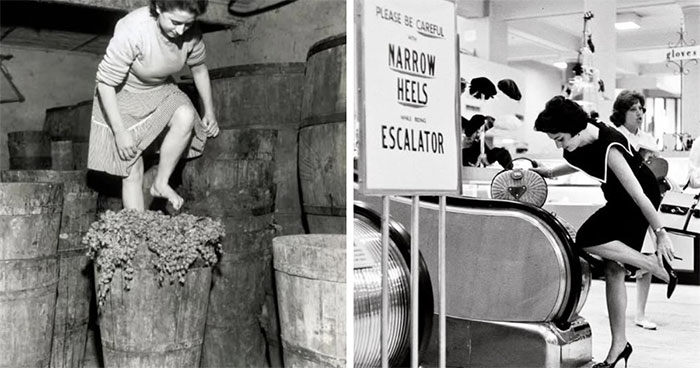If you’ve been a reader of this site long enough, you’ve seen a wide variety of our articles that pretty much represent the current state of the internet. We’ve done wholesome content, some that isn’t as pleasant, and from time to time, we delve into the odd and confusing.
Take these photos, for example. We’ve collected them from the I Want To Leave OK Instagram account, a page with zero context that may evoke different emotions.
You may laugh or get weirded out, but ultimately, you may be overrun with a palpable sense of confusion and ask yourself, “What am I looking at?”
This post may include affiliate links.
Whether these photos befuddled you, induced laughter, or made you cringe, they grabbed your attention. That then begs the question: what about these types of content do people find so appealing?
According to market research expert Vasim Samadji, these images have enough shock value to trigger an emotion, even if it isn’t necessarily a positive one. That creates a sense of community among those who see and react to them.
Why does this look like Beastie Boys album cover?! - 🎶Cuz you can’t, you won't, and you don't stop 🎵
There’s also the aspect of visual storytelling, even with the photos on this list that lack context. The weird imagery allows the viewer to create their own narratives, making it resonate with them.
According to DataDab, viral photos — regardless of context or the lack thereof — are relatable enough for people to have them resonate with their own experiences, values, or aspirations.
Given the seeming power of weird, cringey, and out-of-context photos, can they be used as a marketing tool? Samadji believes so, with the constant evolution of digital marketing trends. However, he offered a caveat: such types of content must be used correctly.
“By creating content that’s deliberately awkward or funny, brands can attract attention and generate buzz,” Samadji wrote.
However, using weird and cringeworthy content as a marketing tool can also hurt one’s brand reputation. To prevent this from happening, experts from the Vanderbilt University Owen Graduate School of Management advise engaging in social listening before, during, and after the campaign.
“This is especially true when marketing materials reference pop culture or target younger consumers, where trends change fast, and it’s easy to miss the mark,” communications specialist Lacie Blankenship wrote.
"If your going to take up our time with a sin today, make sure it's original."
Now, we’d like to hear from you, readers. What was your first reaction upon seeing these photos? Were you bothered or entertained by the lack of context? Share your thoughts in the comments!
If someone asked, I'd be very tempted to respond with "No, I can't see anything."
Sorry, but if you live in the US there isn't enough money in that cash dispenser to pay your hospital costs.
When an animal does that with their ears,they are frightened. Please don't do this

 Dark Mode
Dark Mode 

 No fees, cancel anytime
No fees, cancel anytime 






































































































































